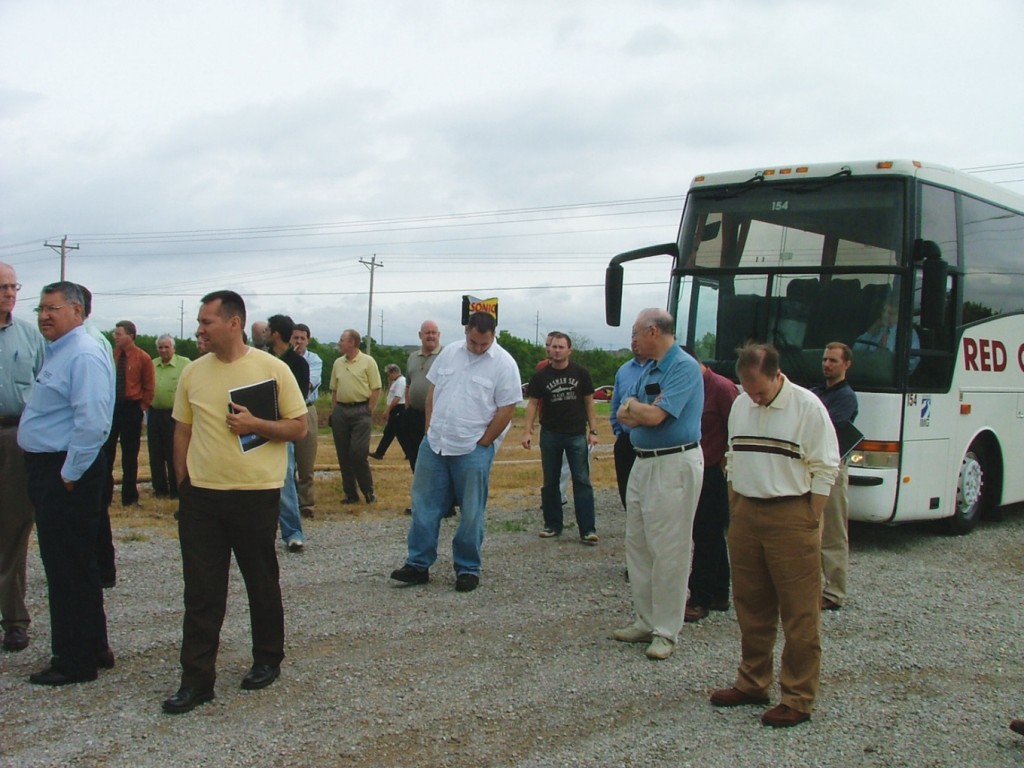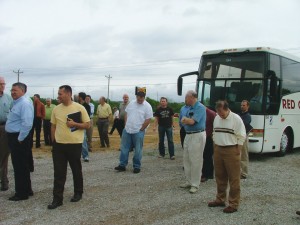 How many churches does Oklahoma need? This question is often asked and is always appropriate. And I believe it can be answered in a way that will help each of us understand why we as Oklahoma Baptists have a strong commitment to starting many more churches in our state. First, I want to tell you a short story that I think will help us answer the question.
How many churches does Oklahoma need? This question is often asked and is always appropriate. And I believe it can be answered in a way that will help each of us understand why we as Oklahoma Baptists have a strong commitment to starting many more churches in our state. First, I want to tell you a short story that I think will help us answer the question.
Leslie Newbigin was a missionary to India for nearly 40 years. A gifted practitioner and thinker, he quickly became a key figure in developing mission strategy. On one occasion, a meeting was held to discuss the number of churches to plant in a given area.As the discussion ensued, Newbigin saw that the criteria used to determine the number of churches to plant concerned how much population it would take to serve the needs of a single church.
But as they considered the teaching of Scripture, and how people have been won to Christ throughout history, they came to understand that you cannot determine the number of churches needed by how many people it takes to meet the needs of the church. It is not the needs of the church that should drive strategies to reach lost people. Church planting strategy is driven by the cultural realities of the lost people in the area and how best to reach them.
What is true in India is true in Africa, and it is even true in Oklahoma. The number of churches needed in Oklahoma is not determined by the population base it takes to grow a church to an attendance of 100 or 200 people. The number of churches needed is determined by the cultural realities of the community, as well as the culture of the existing churches, and together these help determine how many churches are needed to effectively reach the lost with the gospel of Jesus Christ. These cultural realities include language, economic and social concerns, age demographics and a number of other factors. In the end, the church, each church, does not exist for itself but for God, and for the world that Jesus came to save.
An additional bit of information might be helpful at this point. The size of most churches worldwide is about 50 in attendance. This has been true historically. Wherever you travel in the world, from China to Zimbabwe to Brazil, the typical church has about 50 people on their day of worship.
“What about Oklahoma?” you ask. In 2006, the median Baptist church in Oklahoma had 52 present in Sunday School on an average Sunday. That means that half of all Oklahoma Baptist churches have less than 52 in average Sunday School attendance and half have more than 52 in Sunday School. Oklahoma is no different than Alabama or Algeria, Tennessee or Thailand. Most of our churches are smaller in attendance, just as most churches in the world are small. This fact has never changed significantly and there is no reason to believe it will ever change. Moreover, when a religious group tries to change this by focusing more on developing existing churches and less on starting new churches, that denomination declines.
This is not to say that we shouldn’t work to revitalize our existing churches through prayer and evangelism and renewal strategies. But the revitalization of existing churches will never be sufficient to reach a growing population in a culture that is undergoing constant change.
The way we will reach more people in any significant number is by starting more churches, and starting those churches for the purpose of reaching lost people. The day has never been, and will likely never be, that the typical church in Oklahoma will average 100 people in attendance. Despite 30 years of emphasis on church growth, churches have not grown on average. Indeed, we have experienced a decline in attendance throughout the United States and Oklahoma.
Furthermore, the only places in the world where Christianity is growing are those places where the number of churches is growing. And those places where the church is growing rapidly, such as in China and Bangladesh, are experiencing a “church planting movement,” which is a rapid multiplication of churches.
Those who study the growth of God’s kingdom worldwide have observed that a church planting movement does not occur unless half of the existing churches are involved in starting new churches. Let that observation settle deep in your heart. To see real progress in reducing the number of lost people, we need 800 of our churches engaged in starting new churches.
Is your church engaged in starting new churches in Oklahoma and regions beyond? When you learn that a new church is beginning in your area, do you rejoice at the possibility that this new church will reach lost people that others haven’t reached? Do you measure the number of churches needed in your area by how many “larger churches” the area can support? If so, I hope you will consider changing your views to accommodate the reality of where most churches are in terms of size, as well as the reality that we are not reducing the number of lost people through existing churches.
I believe Oklahoma can lead the way in helping Baptists return to church planting as an essential method to reducing the number of lost people in our state and our nation. Not only do I believe it, but I think we are beginning to see it to the glory of God. I hope that you will be among those whom God uses to bring a harvest revival to our beloved state.
Randall Adams is leader of the Church Outreach Team, BGCO.






